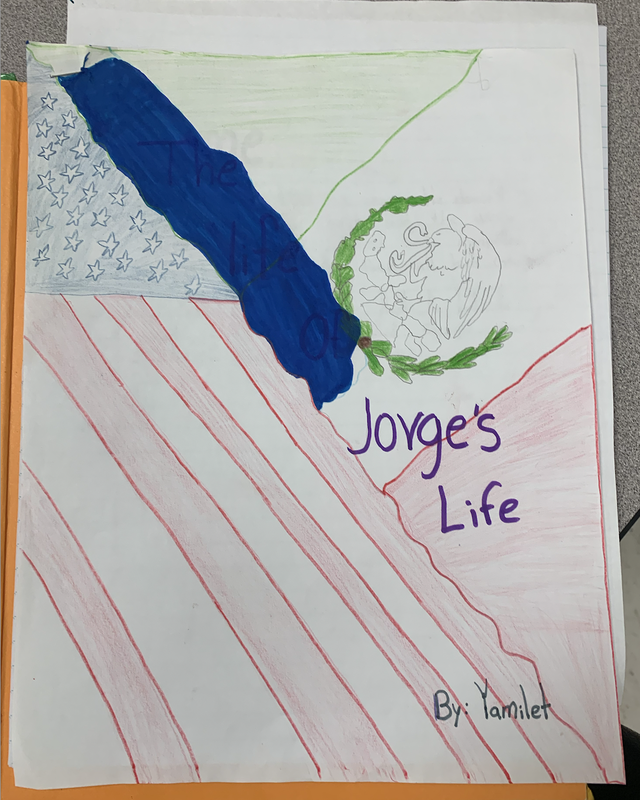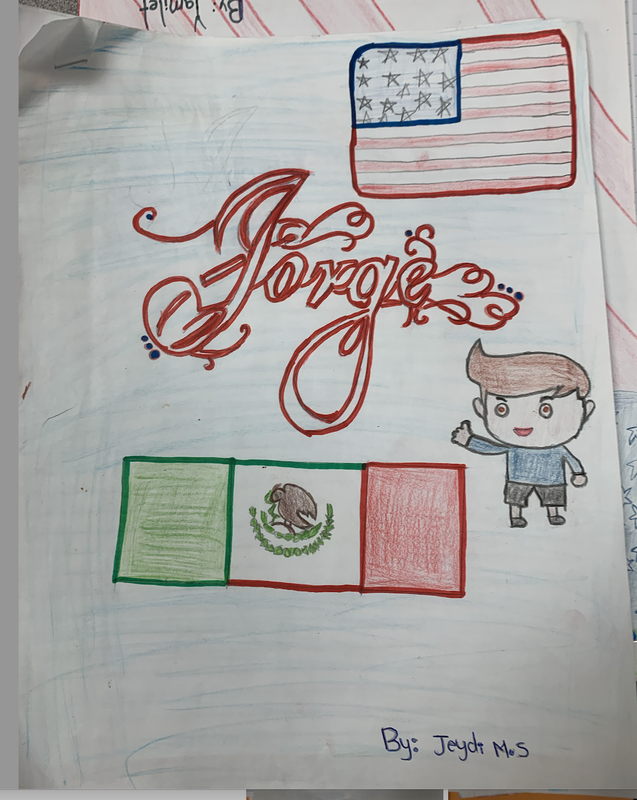My Name Is JorgeI have to be transparent and share that poetry is not one of my favorite genres to read or to choose as a mentor text to teach my students. Of course, once in a while, I come across some amazing poems that shake me to my core - like "My Name is Jorge: on Both Sides of the River" by Jane Medina I LOVE using this book towards the end of April to celebrate Poetry month but also to begin introducing our last unit of the school year - Moving Stories. I cannot remember how I came across this book, but what I do remember is turning every page and finding myself reflected in every word. I'd say that this is one of the first books I came across in my first year of teaching and it impacted so much in the material and resources I began using to teach my multilingual students. What fascinates me about Jorge's story is that each poem is a window for the reader to learn about an event and experience in Jorge's life. Each poem is at a kid-friendly level that children can understand and learn from Jorge and his family. Lesson #1Unfortunately, I only own two copies of this book so I had to get creative to have students read the book. I started by analyzing the book first and deciding which poems are the core of Jorge's story. Even though all the poems are fantastic, I knew that reading the whole book would've been overwhelming for my newcomers since there are 27 poems. The poems I chose are: My Name is Jorge Invisible Why Am I Dumb? The Busy Street Dirty Words Mexican Dummy Tine The King of the United States Ants-On-A-Log My Paper Suspended Men Don't Cry The Test Packing Once I had selected the poems I wanted to have students analyze, I made a list of themes I noticed were highlighted by each poem. The themes I came up with were Language, Food, Representation, School, Immigration, Name, Family Divided, Unfairness, and Back to Mexico. I made a copy of the poems I selected (along with the Spanish translation) and I placed them all around our classroom. The idea was to have students get up and go around the room reading the poems. The assignment was to read each poem and think about what the poem was mostly about. Each student was given a sticky notepad to share how each poem is related to one of the themes listed by the teacher. I had placed the themes on chart paper on the board so students knew what each theme was. Many of the themes were topics we had discussed during previous lessons. I also left a chart paper with a question mark for students who wanted to brainstorm their theme. Lesson #2My students learned a lot about Jorge and his family - As we were discussing what Jorge and his family had experienced in Mexico, throughout their immigrant journey, and here in the USA, I noticed that it was becoming easy for my students to retell the events and connect with Jorge's life. So, the follow-up lesson was to take the sentences we had written on our sticky notes and the knowledge we had gained about Jorge's life to write all about Jorge's life in a narrative format. I put together a packet for each student to begin a story draft. Each packet contained a cover white sheet of paper and ten notebook sheets of paper - one for each theme in the story. After students created a cover for their story about Jorge, they were instructed to retell Jorge's story using the sentences they created from each poem and for each theme. We talked about how a story must have a beginning, a middle, and an end - so as they picked the order of their sentences, they were to consider what might've happened when and in what order. For example, the poem about Jorge's name is. a great poem to introduce Jorge. Next, poems that share about this childhood, migration, school, family, etc. All books were different since everyone had a different perspective of the poems and added their perspective. Each student's book about Jorge had at least 10 pages and was in chronological order. Once the story drafts were ready, students took turns to meet with me to make sure the book was in the correct order. We also discussed ways to make the book interesting and with our perspective and connections added to it to make it interesting. Lesson #3Students' stories were fantastic and I didn't want them to just remain a draft - I knew that these stories needed to go out to their world to read. These stories are such a great example of how powerful a story can be - how important it is for students to read books that reflect and affirm their existence.
I've always used the website WriteReader to encourage my students to publish their writing for the world to see. This, of course, was the first resource I thought about when thinking about publishing my students' stories. Here are their stories. I encourage you to make time to read them and perhaps you can also find a personal connection with these stories. Yency's Jorge's Story Alanie's Jorge's Story Jeydi's Jorge's Story Yamilet's Jorge's Story Miriam's Jorge's Story Alhassan's Jorge's Story Alhussein's Jorge's Story Enrrique's Jorge's Story Alexander's Jorge's Story Jhosselyn's Jorge's Story Luis' Jorge's Story
0 Comments
Your comment will be posted after it is approved.
Leave a Reply. |
Categories
All
Archives
May 2024
|

















